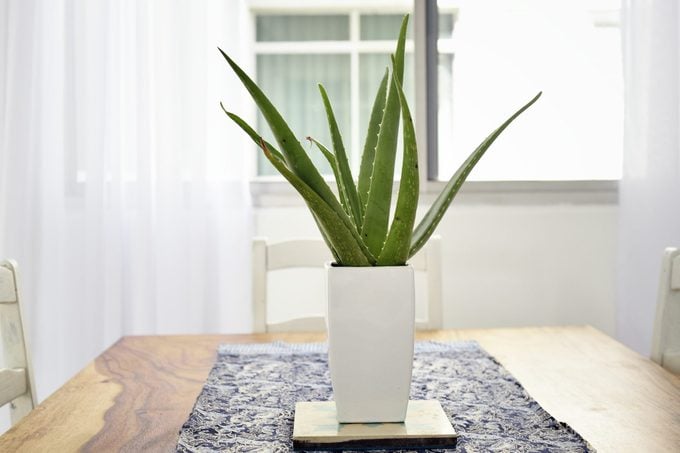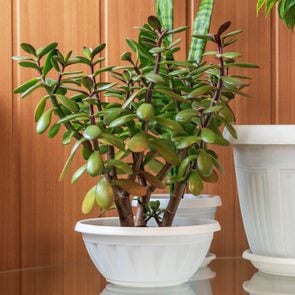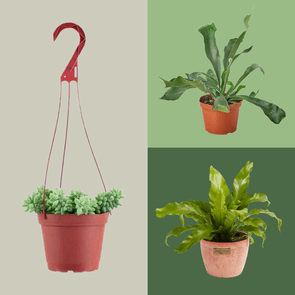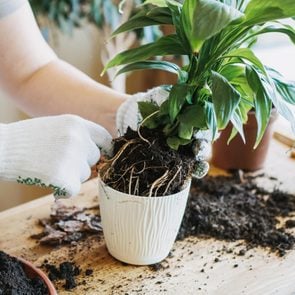How to Care for Aloe Plants
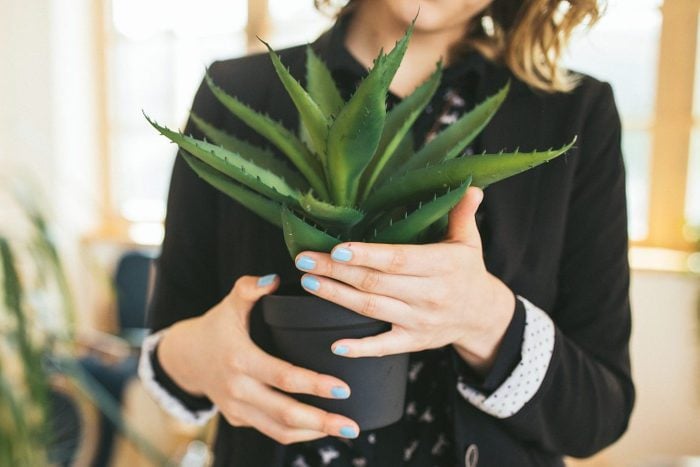
This beautiful, easy-to-care-for plant doubles as a first-aid kit
Our editors and experts handpick every product we feature. We may earn a commission from your purchases.
The foot-tall (or longer) spiky leaves of aloe vera add an almost otherworldly beauty to your home. But the biggest draw of these medicinal plants is that they act as an easily accessible first-aid kit. “The gel in the leaves works great for healing burns, and every household should have one because of that,” says Lisa Eldred Steinkopf, aka “The Houseplant Guru,” a blogger, lecturer and the author of Houseplants: The Complete Guide to Choosing, Growing, and Caring for Indoor Plants. Fortunately, aloe plant care is simple. The low-maintenance indoor plants only require plenty of sunlight and a prudent plant watering schedule.
| Botanical name | Aloe Barbadensis |
| Height | Up to 3 feet, but usually 1 or 2 feet |
| Sun exposure | Bright indirect light to full sun |
| Soil type | Sandy, or a cactus potting mix (without fertilizer) |
| Soil pH | Neutral to slightly alkaline (7.0 to 8.5) |
| Toxicity | Toxic to cats and dogs |
On This Page
Where to put an aloe plant
Aloe vera plants thrive in typical household temperatures—between 55 and 85 degrees—and standard home humidity.
“They need bright light, such as you would get in a south-or west-facing window, but are a little more forgiving of partial sun than most succulents. In fact, they can become sunburned if exposed to intense afternoon sun,” says Alex Wertley, a greenhouse sales associate at Primex Garden Center in Glenside, Pennsylvania. If the aloe’s leaves change color to light yellow or red, or if they develop black spots, then the plant is getting too much light. Move it to a less sunny location, and it should rebound.
Make sure you position this medicinal plant out of reach of cats and dogs. Aloe leaves contain two substances: a gooey gel in the center, and a white sap around the edges. The aloe gel is not toxic to pets, but the latex sap is. It can cause vomiting, diarrhea and lethargy if your pets eat quite a bit of it.
Aloe plant care
Soil
How to grow aloe vera? Start by potting it in a well-draining mix, like a cactus or succulent blend. “The soil should be really chunky,” says Wertley.
Water
“The number one mistake people make with aloes is overwatering,” says Wertley. During the growing season, spring and summer, water when the top inch of the soil is dry, roughly every 14 days. In fall and winter, the best aloe vera plant care is to water only once a month. Signs of overwatering: leaves turn brown or mushy or develop black spots. Root rot can easily set in.
“If you suspect you’ve been overwatering, stop watering immediately, and the plant may recover,” Wertley says. Underwatering, on the other hand, is much easier to fix. “If the leaves start to shrivel—they start looking like prunes—give the plant a good, thorough drink of water. You should see water coming out the bottom of the pot. The plant perks up in a day or two,” says Wertley.
Fertilizer
Aloe plant care does not call for a lot of fertilizer. “Fertilize once in spring and once in the summer. Use a formula for succulents and cacti or any balanced (20-20-20, 10-10-10 or 5-5-5) basic houseplant fertilizer,” Wertley explains.
Types of aloe plants
There are more than 500 kinds of plants in the aloe family, but only a handful, in addition to aloe vera, remain small enough to use as indoor houseplants. These are some of the smaller types of aloe plants.
- Aloe vera is the classic 1- to 3-foot plant with spiky leaves that sometimes look like octopus arms.
- Hedgehog is a different species from aloe vera that stays compact and is only 12 inches at maturity.
- Tiger tooth, another species, has spikes on the ends of the leaves that look like teeth.
- Christmas Carol, a hybrid of a variety of species, has rosettes that grow 8 to 12 inches high and feature dark-green leaves with crimson raised spots.
- Lace aloe, also a different species, has low (6- to 9-inch) rosettes and, unlike other aloes, grows quickly. Compared with larger varieties, it’s a great small indoor plant.
Common pests
Typically, indoor aloe plant care does not call for pest control. But one possibility, much more common in outdoor plants, is an infestation with aloe mites, very tiny, spider-related bugs that suck sap. If you can spot them, you can kill them with a cotton swab doused in alcohol. But you may not realize you have an infestation until they have caused cancer-like growths on stems, leaves and flowering stalks that grow around the pests and protect them. To maintain the health of your plants, remove these growths with a sharp knife. Also be on the lookout for pests like fungus gnats and spider mites.
How to propagate aloe plants
Propagating aloe is easy. “The plants do the propagation for you,” says Wertley. Aloe plants tend to produce baby plants right there in a pot. “Keep these ‘pups’ attached to the mother plant until they are one-third to one-half the size of the mother,” Wertley says. Remove the entire plant from the pot and snip off the pup or pups as close to the mother plant as possible.
You are more likely to succeed with a pup that has roots, though even ones without them will probably also develop new roots. Let the cutting harden off for a day by placing it on newspaper in shade, which will let it develop a disease-fighting callus. Then plant the pup in a new pot.
Check out more tips on how to propagate houseplants before you begin.
FAQs about aloe plants
How to cut an aloe vera plant
The gel in aloe vera leaves soothes sunburned skin and may help prevent peeling, according to the Cleveland Clinic. In addition, “Application of aloe gel appears to shorten the duration of wound healing for first- and second-degree burns,” notes the Mayo Clinic. To use the gel, chop off a piece of a leaf, cut it in half and wipe the sticky substance on your skin. Pay attention to where you cut the plant, because the leaf will not re-grow and you want to maintain a full-looking plant.
Why is my aloe plant turning brown?
You are probably overwatering it, but for the best aloe plant care, also check for infestations like powdery mildew or white fungus balls.
Why aren’t I seeing flowers?
Aloe plants can produce yellow, orange and red blooms, but you are unlikely to see any if your plant is indoors. Part of the reason is that plants normally wait until they are four years old to bloom. But the lack of temperature change indoors, along with lower light compared with outdoors, inhibits the production of flowers. “If you do get flowers, that means you are doing 100 percent of what you need to do,” says Wertley. If you’re looking for some color, you might have better luck with these indoor flowering plants.
Sources:
- Lisa Eldred Steinkopf, aka “The Houseplant Guru,” blogger, lecturer and author of Houseplants: The Complete Guide to Choosing, Growing, and Caring for Indoor Plants
- Alex Wertley, greenhouse sales associate at Primex Garden Center in Glenside, Pennsylvania
- Animal Wellness Magazine: “Is aloe vera safe for dogs and cats?”
- Debra Lee Baldwin: “How to Manage Aloe Mite”
- Mayo Clinic: “Aloe”
- Cleveland Clinic: “Aloe Vera for Sunburns: Does It Help?”
- ProFlowers: “Aloe Vera Plant Care Guide: Growing Info + Tips”

